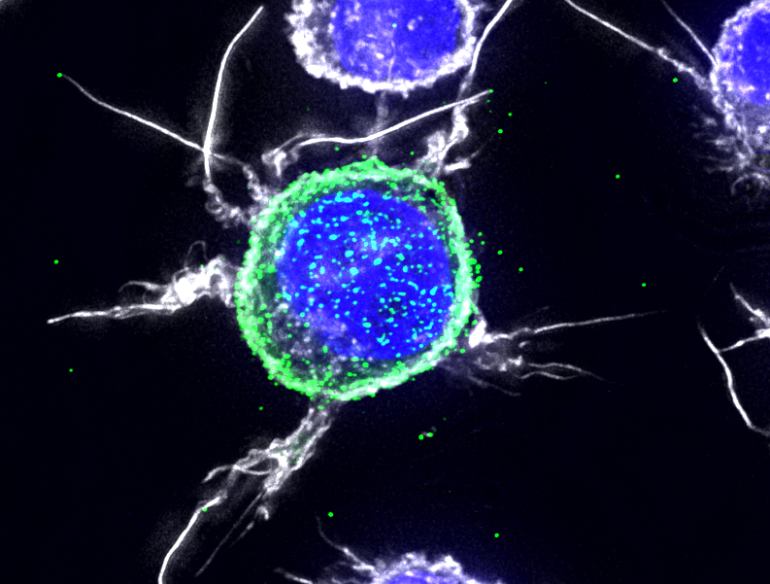New research from the Kirby Institute published in eLIFE combines studies in monkeys with mathematical modelling to show that latent HIV virus ‘wakes up’ at irregular periods, and that this can be hard to predict from measurements of the latent virus in blood.
The research was designed to enhance our understanding of the latent HIV reservoir, and to uncover information to design better HIV treatments and a potential cure.
“We currently have a number of strong antiretroviral drugs that can control HIV, but can’t completely eliminate it from the body,” said Professor Miles Davenport from the Kirby Institute, who was the senior author on the paper.
“These treatments suppress the replication of the virus but cannot control the portion of the virus that lies ‘latent’ or inactive inside cells. This is why treatment needs to be continued for life, because if it is stopped, the virus ‘reactivates’ from these latently infected cells, and high levels of virus return.”
Understanding and responding to latent HIV is thought by scientists to be the key to ‘curing’ HIV, but little is understood about when and how the latent virus ‘wakes up’.
This study used a unique ‘barcoded’ SIV virus (the monkey version of HIV), that allowed the scientists to observe the ‘waking up’ of individual latent cells following treatment of monkeys at different stages following their infection.
“At a small scale, we observed that there was more evidence of latent HIV virus in the monkeys that received treatment later, but latently infected cells were still present in the monkeys treated within 4 days of infection. Interestingly however, the amount of latent SIV cells measured in blood in the monkeys did not scale as expected with how quickly the virus reactivated following treatment,” said Professor Davenport.
“While some scientists have hoped that early treatment might mean that the latent HIV virus was less established and therefore easier to treat or cure, this research suggests that SIV latency is established very early, and actually does not increase greatly with ongoing infection,” continued Professor Davenport. “This finding suggests that we need to look beyond the number of latent cells in the blood to predict when HIV will reactivate after we stop treatment.”
